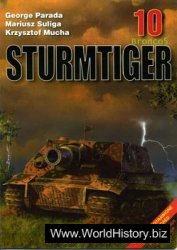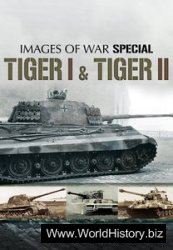Charles Conroy provides a detailed overview of the ways in which nineteenth - and twentieth-century scholars of ancient Israel have employed the term ‘‘epic’’ as a designation for various portions of the Hebrew Bible. He writes ‘‘the term epic has been used in a bewildering variety of ways with reference to early Hebrew literature’’ (1980: 14). A sampling of representative scholars cited by Conroy, in fact, reveals certain recurring interests and themes.
Cyrus Gordon referred to the Pentateuch as ‘‘the Epic of Nationhood’’ (see also Augusti 1827: 137-49; Conroy 1980: 2) and imagined an oral recitation or singing of this epic during the Passover festival, to ‘‘knit the segments of the nation together telling how they achieved their place in history in the course of a great event’’ (Gordon 1962: 293). Emphasizing the texture of language and other stylistic criteria, Hermann Gunkel wrote of an ‘‘epic style’’ (epischen stil) in passages such as Gen. 19: 30-8, Judg. 9: 8ff., and Job 1-2, characterized by ‘‘purposeful parallelism’’ in content, repetition in language, and a particular variety of artfulness (1910: 218). Gunkel, however, drew a distinction between biblical works such as Genesis and Homer. In his view, the former is not epic in the same sense as the ancient Greek material (1910: xcix; see also Reuss 1881: 159).
Relying on a definition of epic that emphasizes ‘‘narrative’’ quality and ‘‘creative treatment,’’ R. G. Moulton pointed to epics of various subtypes in Gen. 1-11, Ruth,
And Jonah (1896: 221-43; Conroy 1980: 4; for an outline of “subgenres of epic’’ see also Jason 1977: 30-2). Sigmund Mowinckel viewed the titles ‘‘Book of the Wars ofYahweh,’’ mentioned in Num. 21: 14, and ‘‘Book of Jashar,’’ mentioned in Josh. 10: 13 and 2 Sam. 1: 18, as allusions to a collection or collections of national epic material. Mowinckel translated ‘‘Yashar’’ as brav in the German, ‘‘excellent, high-born, noble’’ (1935: 1312), and viewed the Sefer Yashar as having been a collection of‘‘narratives in poetic form,’’ linked with happenings in a Wonderwelt and related to Marchen (wondertales or folktales) (pp. 133-4). Like modern folklorists, he noted that the stuff of what he considered to be epic could be employed in both delimited and more expansive ways: a tale of a flood may be presented as an account in and of itself or as part of a larger tale or tale cycle (p. 141). Building on the work of Eissfeldt, he saw the moshel mentioned in Num. 21: 27 as a kind of ‘‘rhapsode,’’ a singer of tales of the deeds of heroes (p. 143). Mowinckel was thus sensitive not only to the texture and text or content of the literature, but also to its authors’ compositional orientations and the compositions’ possible performance contexts.
Pfeiffer and Pollard also wrote of two epics, the sources to Samuel and the Yahwist composition, in their book The Hebrew Iliad (Conroy 1980: 5). As the title and subtitle of their work indicate, in contrast to Gunkel they strongly identified biblical narrative of a certain variety with Homeric epic and were quite daring, some might say fanciful, in identifying the Israelite ‘‘bard’’ who composed the Israelite ‘‘Iliad.’’ Exploring matters of style and content, Umberto Cassuto found a number of epic threads and indicators in the Hebrew Bible (1955). Most important among more recent contributions to the discussion of epic is the seminal work of Frank Moore Cross, who himself has refined and developed his view of Israelite epic over a lengthy career.
In Cross’s view, epic refers to a hypothesized common poetic tradition that lies behind the ‘‘so-called JE sources’’ (1973: 83 n. 11; 293). Included in this definition is the belief in the existence of specific, written sources that lie behind the Pentateuch, the documentary hypothesis. ‘‘Epic’’ becomes a means of distinguishing richly narrative materials from priestly sources which show special interest in preserving or shaping texts concerned with ritual, genealogy, purities, and other matters of relevance to priests (Cross 1973: 203, 315, 324, 343). For Cross, the plot of this quintessential epic included the exodus from Egypt, the covenant at Sinai, and the conquest of the land of Israel (p. 85). He sees the poetic epic underlying JE as similar in genre to epics from ancient Canaan and Greece, but expressing a historical orientation and worldview particular to ancient Israel. Epic events, moreover, would have been re-enacted in the festivals of pre-monarchic Israel in ancient sanctuary settings, as essential story and ritual drama combined to ‘‘renew’’ Israel’s ‘‘life as a historical community’’ (p. 143). Contributing to themes in this epic tradition are a variety of biblical scenes such as the visitation to Abraham promising a son born of Sarah in Gen. 18 (p. 182) and the rebellion of Dathan and Abiram in Num. 16 (p. 205).
Cross’s more recent work (1998) is influenced overtly not only by Albert B. Lord, who figured in his 1973 treatment of epic, but also by Cedric W. Whitman and contemporary scholars including Gregory Nagy and John Niles. In From Epic to Canon, Cross outlines more systematically the traits of Hebrew epic:
Oral composition in formulae and themes of a traditional literature; narrative in which acts of gods and men form a double level of action; a composition describing traditional events of an age conceived as normative; a national composition, especially one recited at pilgrimage festivals. (1998: 29)
Certain themes and interests do emerge from this history of scholarship on the biblical epic: concern with poetic style and other stylistic criteria; emphasis on heroes’ great deeds and the theme of national identity; comparisons to Homer; interest in a possible festival context; and discussion of the place of so-called epic material in the Bible’s redaction history.
Cross’s particular use of the term ‘‘epic’’ to describe stretches of Israelite tradition, both extant biblical portions of biblical literature and hypothesized traditions lying behind the Hebrew Bible, has been strongly criticized by Charles Conroy, who roots his own list of the criteria of epic in the classic works of H. M. Chadwick (1912) and C. M. Bowra (1952, 1972), among others. For Conroy, epics are quintessentially heroic. They ‘‘tell of men and doings greater and grander than in the poet’s own generation’’ (Bowra 1972: 3, 79); they are poetic (Conroy 1980: 19); they are often although not always aristocratic (Conroy 1980: 19, 20); in epic, relationships are based in ‘‘personal loyalty’’ and are ‘‘not nationalistic in a narrow sense’’ (Conroy 1980: 20; Chadwick 1912: 329-32); they deal with battle, ‘‘valiant deeds on fields of battle or perilous combat with fearful monsters’’ (Conroy 1980: 20). Working from such a definition, one is hard-pressed to include tales of the patriarchs in the epic genre, as Conroy points out. Inclusion depends, however, on one’s definition of the genre. Indeed, Bowra himself was less than certain that the Israelites ever produced what he would call ‘‘heroic poetry,’’ a category important to Conroy’s view of epic. Even while allowing that ‘‘Deborah’s song,’’ David’s laments, and tales of Samson suggest qualities of the heroic, Bowra viewed biblical ‘‘chief characters’’ as ‘‘more life-like than ideal,’’ the tales as more ‘‘historical than heroic’’ (1952: 14-16). Thus Bowra might exclude even what Conroy does include.




 World History
World History









